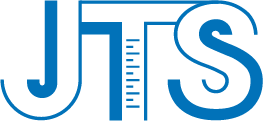Restricted substance testingProduct
Your Location:Home > Restricted substance testingPhthalates (abbreviated as PAEs) are a class of chemicals widely used as plasticizers. Due to their potential reproductive toxicity and endocrine disruption risks, many countries and regions have implemented strict controls on their use in consumer products. Below are the regulatory requirements in major countries and regions:
1. European Union
REACH Regulation: Lists DEHP, DBP, BBP, and DIBP as Substances of Very High Concern (SVHC). The combined concentration of these four substances must not exceed 0.1% (i.e., 1000 ppm) in toys and childcare articles.
RoHS Directive: Restricts the use of four phthalates (DEHP, DBP, BBP, DIBP) in electrical and electronic equipment, with a limit of 0.1%.
Toy Safety Directive: For toys intended for children under three and toys intended to be placed in the mouth, the concentration of six phthalates (DEHP, DBP, BBP, DINP, DIDP, DNOP) is limited to 0.1%.
2. United States
CPSIA: Permanently prohibits DEHP, DBP, and BBP in children's toys and childcare articles at levels exceeding 0.1%. Interim prohibitions are in place for DINP, DIDP, and DNOP.
California Proposition 65: Requires warnings if exposures exceed Safe Harbor Levels for listed phthalates. DEHP, BBP, DBP, DIDP, DINP, DINHP are limited to ≤0.1% in accessible plastic components. The Toxics in Packaging Clearinghouse (TPCH) model legislation sets a sum limit of ≤100 ppm for phthalates in packaging materials.
3. China
GB 6675-2014 "Toy Safety": The sum of DEHP, DBP, and BBP in toys must not exceed 0.1%. Additionally, for parts that can be placed in the mouth, the limit for any single one of these phthalates is 0.1%.
GB 9685-2016 "Hygienic Standard for Uses of Additives in Food Contact Materials": Restricts the specific migration limits of phthalates in food packaging, containers, and materials.
GB 26572-2025 (China RoHS): Effective from August 1, 2027, restricts the use of four phthalates (DEHP, DBP, BBP, DIBP) in electrical and electronic products, with a limit of 0.1%.
4. Canada
In children's toys and childcare articles, the individual concentrations of DEHP, DBP, and BBP must each be ≤ 1000 ppm (i.e., 0.1%).
5. South Korea
The sum of seven phthalates (DEHP, DBP, BBP, DINP, DIDP, DNOP, DIBP) in children's products must be less than 0.1%.
6. Japan
In food contact materials, the sum of three phthalates (DEHP, DBP, BBP) must be less than 0.1%, and the sum of another three (DINP, DIDP, DNOP) must also be less than 0.1%.
Recommendations for Enterprises
Supply Chain Management: Require suppliers to provide compliance test reports to ensure raw materials meet regulatory requirements.
R&D of Alternative Materials: Actively develop new environmentally friendly plasticizers, such as citrate esters, to reduce reliance on traditional phthalates.
Building Testing Capabilities: Establish in-house testing laboratories where feasible, or engage third-party testing agencies for regular screening.






 Our Service
Our Service
